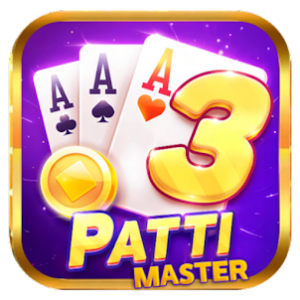Teen Patti Master: A Deep Dive into India’s Popular Card Game
Introduction to Teen Patti master
Teen Patti, also known as “Indian Poker” or “Flush,” is a popular card game originating from the Indian subcontinent. Teen patti master It’s a staple at social gatherings, family celebrations, and among friends. The game shares some similarities with poker, especially the ranking of hands, but it has unique rules and strategies that set it apart. This comprehensive guide delves into the history, rules, variations, strategies, and the rise of online platforms that have made Teen Patti a global phenomenon.
Historical Context
The roots of Teen Patti can be traced back to ancient India, where it was played during cultural festivals and family events. It has evolved over time, blending traditional aspects with modern gameplay. The game gained significant popularity during the British colonial era, where it was played alongside other card games like Rummy and Bridge. Today, Teen Patti master is widely recognized across India and has found a dedicated fanbase in other countries, particularly in South Asia.
The Basics of Teen Patti master
Teen Patti is played with a standard 52-card deck (without jokers). The game’s objective is to have the best hand among the players or to be the last player standing after everyone else has folded. Unlike poker, Teen Patti does not involve a “community” set of cards; instead, each player is dealt a hand of three cards, hence the name “Teen Patti” (which translates to “Three Cards”).
Card Rankings
The card rankings in Teen Patti are similar to poker, with some unique nuances:
- Trail/Trio/Set: Three cards of the same rank. The highest is three aces, followed by three kings, and so on.
- Pure Sequence/Pure Run: Three consecutive cards of the same suit (e.g., 3-4-5 of hearts).
- Sequence/Run: Three consecutive cards, not necessarily of the same suit.
- Color/Flush: Three cards of the same suit, not in sequence.
- Pair: Two cards of the same rank.
- High Card: The highest-ranking individual card in a hand.
Gameplay
The game begins with each player contributing an ante to the pot. The dealer shuffles the deck and deals three cards to each player. Players can choose to view their cards (“seen”) or keep them face down (“blind”). This choice influences their betting options.
- Blind Players: Players who choose to play blind place bets without seeing their cards. They have the advantage of flexibility and surprise.
- Seen Players: Players who have seen their cards can make informed bets based on their hand’s strength.
The game progresses clockwise, with each player having the option to bet, fold, or raise. The betting continues until all but one player have folded or a showdown is initiated.
Variations of Teen Patti master
Teen Patti has several variations that add unique twists to the traditional game. Some of the popular variations include:
Muflis
In Muflis, the hand rankings are inverted, meaning the weakest hand wins. This variation adds an interesting twist, as players aim for lower-ranked hands.
AK47
In this variation, only the Aces, Kings, 4s, and 7s are active in the deck. All other cards are treated as blank. This leads to unexpected outcomes and a different strategic approach.
Joker
The Joker variation introduces wildcard cards that can represent any rank. This increases the chances of achieving higher-ranked hands and adds unpredictability.
Strategies and Tips for Teen Patti master
Teen patti master involves a combination of luck, skill, and psychological tactics. Here are some strategies to help players improve their game:
Observing Opponents
A key aspect of Teen Patti is reading opponents’ behavior. Players should watch for patterns, such as betting tendencies, hesitations, or overconfidence. This information can be used to make strategic decisions.
Playing Blind
Playing blind can be advantageous because it creates uncertainty among opponents. It allows for bold betting without revealing the strength of one’s hand. However, it also involves risk, as players may bet high with weak hands.
Bluffing
Bluffing is a common tactic in Teen Patti. Players with weak hands may bet aggressively to intimidate opponents, forcing them to fold. Successful bluffing requires confidence and a good understanding of opponents’ tendencies.
Calculated Risks
Teen Patti is a game of calculated risks. Players should assess the pot’s size, their hand’s strength, and opponents’ behavior before deciding to bet or fold. The key is to strike a balance between aggression and caution.
The Rise of Online Teen Patti master
In recent years, Teen Patti has transitioned from traditional card tables to online platforms. This shift has expanded the game’s reach and introduced it to a global audience. Online Teen Patti offers several benefits, including:
Accessibility and Convenience
Online Teen Patti platforms are accessible from anywhere with an internet connection. This convenience has attracted players from diverse backgrounds and geographical locations.
Varied Game Modes
Online platforms offer a wide range of game modes and variations. Players can choose from classic Teen Patti, Muflis, AK47, Joker, and more. This variety keeps the game fresh and engaging.
Social Interaction
Online Teen Patti platforms often include social features, allowing players to chat, send gifts, and compete in tournaments. This fosters a sense of community among players, similar to traditional gatherings.



